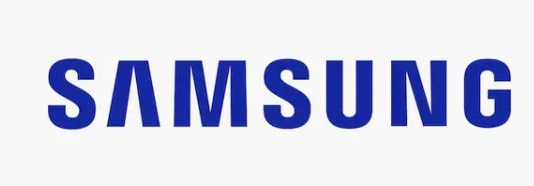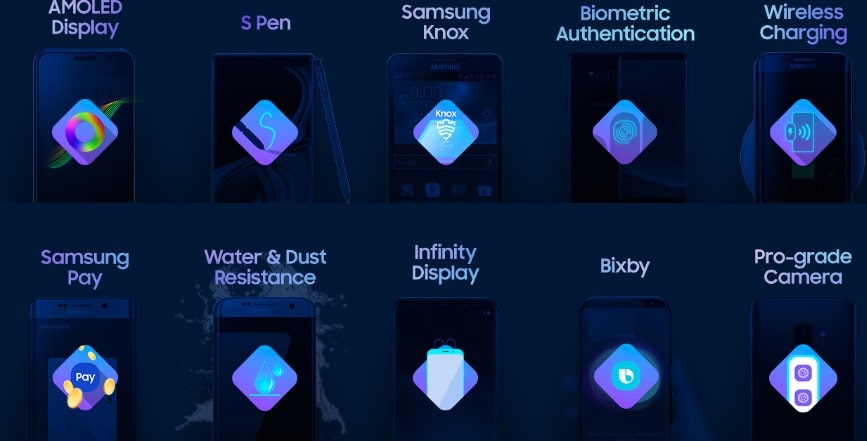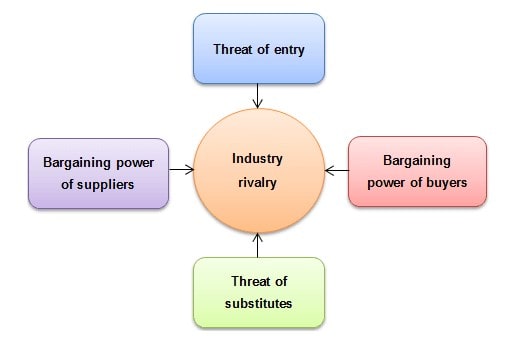- Samsung Innovation Audit: Exploring the Tech Giant's Innovation Capabilities
- Introduction: Analyzing Samsung's Innovation History and Capabilities Through an Audit Report
- The organization and industry overview
- The Organisation's existing Innovation Performance and Capabilities
- The Industry in 2022
- SWOT analysis
Samsung Innovation Audit: Exploring the Tech Giant's Innovation Capabilities
Get tailored assignment help solutions from Native Assignment Help, a dedicated UK company focused on academic excellence.
Introduction: Analyzing Samsung's Innovation History and Capabilities Through an Audit Report
This report intends to perform an innovation audit of Samsung to inspect the organization’s innovation history and its present level of innovation activity and capabilities. The report will also state the key drivers and nature of the industry within which Samsung operates (Tidd and Bessant, 2020). The report will also highlight on SWOT and Porter's 5 forces model analysis to evaluate the weaknesses and strengths within and outside the organization.

Figure 1 Samsung
The organization and industry overview
Samsung and its innovation history
South Korean firm Samsung was established in 1969. The company started by selling televisions, and as it expanded, it made a global entry into the wireless technology sector. It is one of the businesses growing the quickest and strives to be the finest in the world.
The future of Smartphone innovation has been looking more promising in the years leading up to 2022 when the newest Galaxy products are scheduled to be released. Samsung consistently raises the bar for the industry with the release of its newest models at every big event. Since the debut of the first Galaxy S device in 2010, the company has led the industry by releasing hardware and software that surpasses the capabilities of current models each year. A screen Smartphone with exceptional engagement, a Smartphone-stylus mixture that improves creativity and productivity, and the dual-pixel camera tools in the global market are some of the most revolutionary devices so far.
Additionally, the business introduced the Galaxy tablet line and several wearable technologies, like as watches and Buds that have enriched the larger ecosystem and significantly altered the way of life of its users (Karimi and Niaraki, 2019). The Samsung newsroom is offering a look back at the Galaxy series' technological legacy.
The business installed the first dual pixel in the industry in 2016, taking smartphone camera functionality to a new level. By releasing the first folding phone in the world, the Galaxy Z fold, equipped with a 7.3-inch display, the firm broke new ground in the foldable phone market in 2019 (Yun, et. al. 2018). To ensure that Samsung's smartphones contribute to greater environmental sustainability, the company is fully committed to minimizing the ecological impact of its products throughout the entire lifecycle of its phones, from the design to the production stage through to their use and disposal.
The Organisation's existing Innovation Performance and Capabilities
Innovation Capabilities
For the expansion of innovative capability, the company has tools to categorize the key members, such as development leaders and promoters in the business. Experimental learning programs that are innovative, enjoyable, and effective are adopted to improve the performance of the employees for management innovations.
- Shared Vision, leadership, and innovation: the company’s common idea and top supervision obligation are the significant principles of providing an innovative environment. The company’s new management viewpoint applied to devote human resources and expertise to generate greater products and services which also helps in contributing to a better culture.
- Appropriate Structure: The modern business is inclined to have the uniqueness of an unrefined structure with dynamics and an open system. An enlargement in the utilization of information technology, such as interior blogs, email, and shared data repositories, also led to the entail to eliminate core management.
- Key Individuals: Intending to create modernization in the business, the company desires superlative HR in both business and technical backgrounds. The branding plan is not only to generate a brand that individuals trust and admire but also to be a company that everyone wishes to connect with.
- Stretching Training and Development: The internal training programs of the company offer postgraduate study opportunities, scholarships, and international work placement for its team.
- High Involvement: the company’s administrative manager plays a very important role in supporting the culture of practicing modernization by promoting the innovation method and not approaching staff to avoid the solution process.
- Effective Team working: the company has produced the team working and a sturdy assurance of innovation, changing substandard producers to become a brand that produces smart mobile phones. In 2010, the company’s sale of phones was ranked number 1 in the global marketplace.
- The usage of IT and creative management: The increased rate of process and product improvement since ideas are more readily available is significantly improving creative management. It facilitates communication inside the organization and fosters culture by encouraging creativity (Mikalef and Krogstie, 2020). Thoughts are produced and communicated broadly in both vertical and horizontal ways, producing original perceptions.
- External Focus: The Company is shaped to become a leader in technology by external influences. The corporation formerly used a closed innovation approach, investing in the top personnel and centralizing its R&D department.
- Extensive Communication: The Company has implemented innovation management to organize and distribute ideas from academics throughout the organization. Supervisors, coworkers, or other personnel who contribute knowledge, thoughts, and perspectives will evaluate them.
- Information discovery and knowledge sharing: are the two key obstacles that the corporation has identified in the development of a learning organization. It has been decided that the company would have regular brainstorming sessions to increase and collect ideas at every stage of the innovation process, from idea development to adaption and commercialization.
- Knowledge management: The organizational culture at Samsung changed after the organizational learning principle was introduced. The workforce has been persuaded to be more dependable, suggestive, and open to change with a strong curiosity.
- Integrated innovation process: To start, it has been decided that the company will hold regular brainstorming sessions to spread and collect ideas at any stage of the innovation process, from concept development to commercialization and conversion. This is used not just in the process of developing new products, but also to solve challenging issues and advance businesses. To encourage the creativity process, cross-functional groups meet for two hours each day in a room with a wireless connection, high windows, a big-screen TV, snacks, and beverages (Zaman and Naseem, 2021). These welcoming environments encourage interaction among creative staff members and the exchange of fresh ideas. Second, although the business is straightforward, its effective blog has been developed to assist information exchange and discovery.
Samsung's value chain is a direct way for the regulator to track the employees and look for needed improvements. The inflow of product creation is connected to inbound logistics. The company has a 2500 supply chain and has stepped into various new areas of product businesses. Cooperatively, it runs big manufacturing stations located in different areas. Outbound logistics come from the flow of complete products from a company to customers and in the global market (Muflikh, et. al. 2021). The company has been opposing top brands and crossing them in the past. The global distributors and sellers of Samsung provide pre-sale service.
The vibrant and innovative capabilities were recognized to enlighten the company’s victorious expansion in semiconductors which includes the possibility for recognition and commercial insight by top supervision. The company draws the principle objectives next to technology acquisition and learning. It also has leapfrogged competitors through product and process innovation( Rialti, et. al. 2019). The product line of Samsung has diversified leveraging accessible capabilities and possessions released through streamlining during the economic crisis.

Innovation performance
The most recent figures on the Smartphone market share worldwide show that as of July 2022, the company led the group with a market share of 28.14%. This means that almost 3 in 10 Smartphone users worldwide use a Samsung phone. The company’s electronics invests massively in intellectual property rights. Samsung Electronics holds more than 200,000 patents worldwide (Edquist, et. al. 2018). Brand Finance has designed the brand worth of the Samsung brand 12 times in 2011 and 2022.
The Industry in 2022
Samsung is a famous technological brand located globally which is popular for its televisions and smart phones and many more products like wearable and cameras. The company is also known for its target on technological innovation. The company can use Porter’s five forces analysis that affects the competitive position and market share of the company in the global market and accomplish its goals. These 5 forces are a part of every sector and market which helps in determining the attractiveness of the industry.
Bargaining power of suppliers: In the case company their suppliers’ bargaining influence is low because of numerous factors. The first important factor is their smaller size due to which their negotiating power is low and these suppliers are spread all over the global market. Moreover, a company can easily control a new supplier from an older one and can bring a major source of profits for these suppliers, so they cannot simply switch to another brand.
Bargaining power of customers: The general negotiating power of customers is moderately higher in the company. The reason behind that is the switching cost is incredibly low for the customer and they can effortlessly control any of the rival brands, consumers can easily evaluate the brand and their product and interpret feedback from other consumers. High competition, productive use of equipment or technology, and other reasons are behind the increasing authority of consumers. The brand is providing a lot of advertising and marketing channels to attract new customers.
Threat from substitutes: The most important competitor of Samsung is LG, Sony, and Apple. Distant from this, other international and local brands create a competitive threat to the company. In general, consumers have several alternate brands and products before them and the switching costs are also low. Technological innovation, positive brand image, and comparable factors moderate this extravagance to some amount. For every product that a company makes, there are several substitutes available in the market apart from the computer chip. Apart from those laptops, Smartphones, televisions, and other electronic gadgets that Samsung launched, consumers will find the market with substitute products.
The threat of new entrants: the company is present in a highly competitive industry, where firms are competing not only in terms of the price of their goods, but also their uniqueness, creativity, and innovation. A new entrant into the sector would need rising customer knowledge and good branding, which could be not easy, because the current brand is very well-known, and presents established mobile companies (Isabelle, et. al. 2020). Firms such as Apple and Samsung manufacture products that are apparent to be premium and top of the marketplace, while any new firm would have to be satisfied with being perceived as low quality.
Level of Rivalry in the Industry: There is a great amount of competition within the current industry, mainly the influential firms, which include both Samsung and Apple. Higher competition between these 2 firms is particularly powerful because the products that they develop are alike to one another in looks and function.

Figure 3 Porter's Five Forces model
SWOT analysis
|
Strength Samsung is the biggest firm selling products worldwide with a good brand image. The company deals with electronic segments and is the biggest manufacturer and seller of memory chips and the second largest in semiconductors. The company is the world's biggest in size of LED and LCD producer. It has the top reputation in the phone segment in the global market and has also developed its position in the laptop and mainframe industry. |
Weakness The company lacks in segmentation and separation of products. The firm's main weakness is it only focuses on electronic and technology segments and has not measured on fashion, medicine, plant building, and hotel, chemical, petrochemical, and finance segments. The price of its product is higher than other international and regional competitors. The design of its product is not as much of attractive as competitors' products is also a weakness of the company. |
|
Opportunities Samsung can look to go into other countries to enhance its revenue and sales. The company can focus on other sectors to improve the overall revenue of the group. The company has a good opportunity in the software and electronic segment through innovative knowledge and introducing the latest technological tablets, phones, and laptops. Through the company providing the newest technology, latest software, and hardware phones, laptops, and tablets the company can improve its spot in the worldwide competitive market (Benzaghta, et. al. 2021). |
Threats The high rivalry in the Smartphone, tablet, and laptop segments is creating a threat to the company. Nokia, Sony, Apple, and BlackBerry are the main competitors of Samsung in the tablet and Smartphone segments. Dell, HP, and Panasonic are the main competitors in the laptop and computer industry, and acceptance in the world will impact the revenue and profit of a company. Modernization in hardware and software such as Apple is impacting its position worldwide. |
Conclusion
The report has discussed how Samsung is managing its innovation in business. The report has given a brief overview of Samsung and its organizational structure to compete in the global markets. The report has also highlighted on company's innovation history and its existing innovation capabilities and performance. This has stated the analysis of the situation, nature, and innovation in the technology industry to manage their innovation in international as well as local markets. Therefore, the report will also conclude in wider macro and competitive environment factors as well as downstream and upstream supply chain participants.
References
Benzaghta, M.A., Elwalda, A., Mousa, M.M., Erkan, I. and Rahman, M., 2021. SWOT analysis applications: An integrative literature review. Journal of Global Business Insights, 6(1), pp.55-73.
Biemans, W.G., 2018. Managing innovation within networks. Routledge.
Edquist, C., Zabala-Iturriagagoitia, J.M., Barbero, J. and Zofío, J.L., 2018. On the meaning of innovation performance: Is the synthetic indicator of the Innovation Union Scoreboard flawed? Research Evaluation, 27(3), pp.196-211.
Isabelle, D., Horak, K., McKinnon, S. and Palumbo, C., 2020. Is Porter's Five Forces Framework Still Relevant? A study of the capital/labor intensity continuum via mining and IT industries. Technology Innovation Management Review, 10(6).
Karimi, M. and Sadeghi Niaraki, A., 2019. Overview of Performance and Accuracy of Smartphone Sensors in Augmented Reality Applications. Geospatial Engineering Journal, 10(1), pp.49-62.
Mikalef, P. and Krogstie, J., 2020. Examining the interplay between big data analytics and contextual factors in driving process innovation capabilities. European Journal of Information Systems, 29(3), pp.260-287.
Muflikh, Y.N., Smith, C. and Aziz, A.A., 2021. A systematic review of the contribution of system dynamics to value chain analysis in agricultural development. Agricultural Systems, 189, p.103044.
Ovidijus Jurevicius, 2021, Porter’s five forces. [Online]. [Available on]. :
Rialti, R., Marzi, G., Ciappei, C. and Busso, D., 2019. Big data and dynamic capabilities: a bibliometric analysis and systematic literature review. Management Decision.
Samsung Newsroom, 2019. 10 for 10: Highlights from a Decade of Galaxy Innovation. [online].
Samsung.com, 2022. Samsung. [Online].
Tidd, J. and Bessant, J.R., 2020. Managing innovation: integrating technological, market and organizational change. John Wiley & Sons.
uz Zaman, U.K. and Naseem, A., 2021. Dynamic Innovation Capabilities. In Influencing Customer Demand (pp. 157-181). CRC Press.
Yun, J.J., Jeon, J., Park, K. and Zhao, X., 2018. Benefits and costs of closed innovation strategy: Analysis of Samsung’s Galaxy Note 7 Explosion and withdrawal scandal. Journal of open innovation: Technology, market, and complexity, 4(3), p.20.



